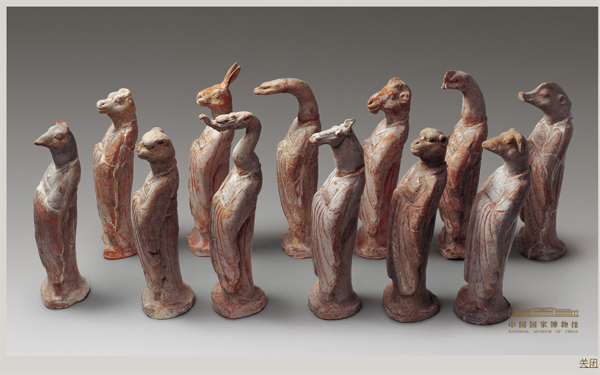 |
|
File photo of a set of Chinese zodiac pottery statues from the National Museum of China's collection dating back to the Tang Dynasty (AD 618-907). [Photo provided to China Daily]
|
Let's take a look at some other zodiac-themed collections held in Chinese museums.
1. Chinese zodiac pottery statues:
The set from the National Museum of China's collection dates back to the Tang Dynasty (AD 618-907) and was unearthed in 1955, in Xi’an. The statues have animal heads and human bodies, and are dressed in long gowns with long sleeves, their hands folded in front of their chests.
The 12 Chinese zodiacs (rat, ox, tiger, rabbit, dragon, snake, horse, sheep, monkey, rooster, dog and boar) correspond to the 12 "earthly branches". They are often found in the form of pottery funerary objects in tombs of the Sui (AD 581-618), Tang (AD 618-907) and Song (AD 960-1279) dynasties.
Pottery zodiac figures were realistic in appearance in the early days, as seen in examples from the Northern Dynasty (AD 386-581). Later, they became more stylized, and gradually transformed into a combination of animal and human features.
The zodiac figures were often placed in a north-south direction in coffin chambers to represent the progress of time. People hoped that such an arrangement would encourage the god to time to guard the tomb.
We recommend:
